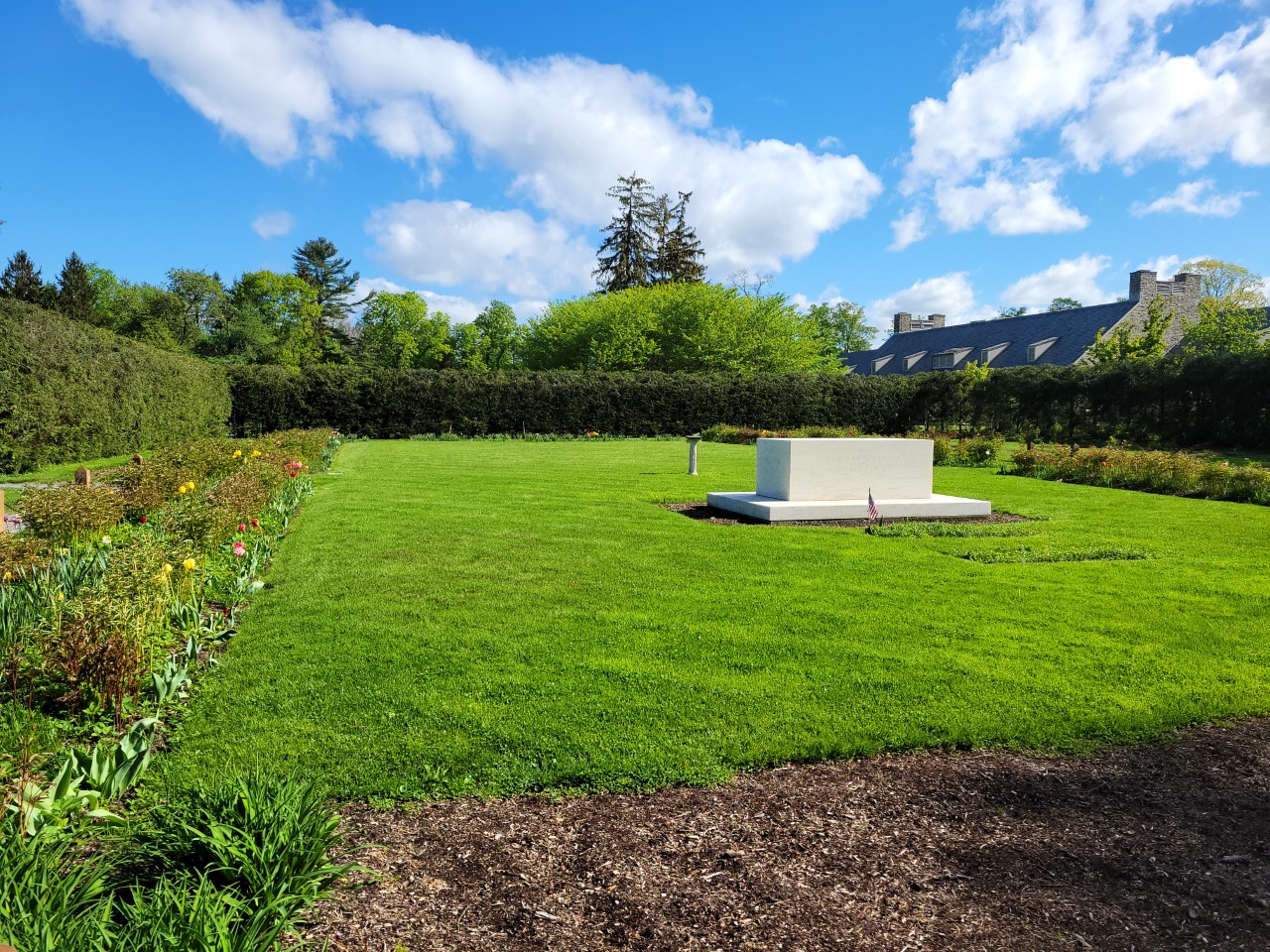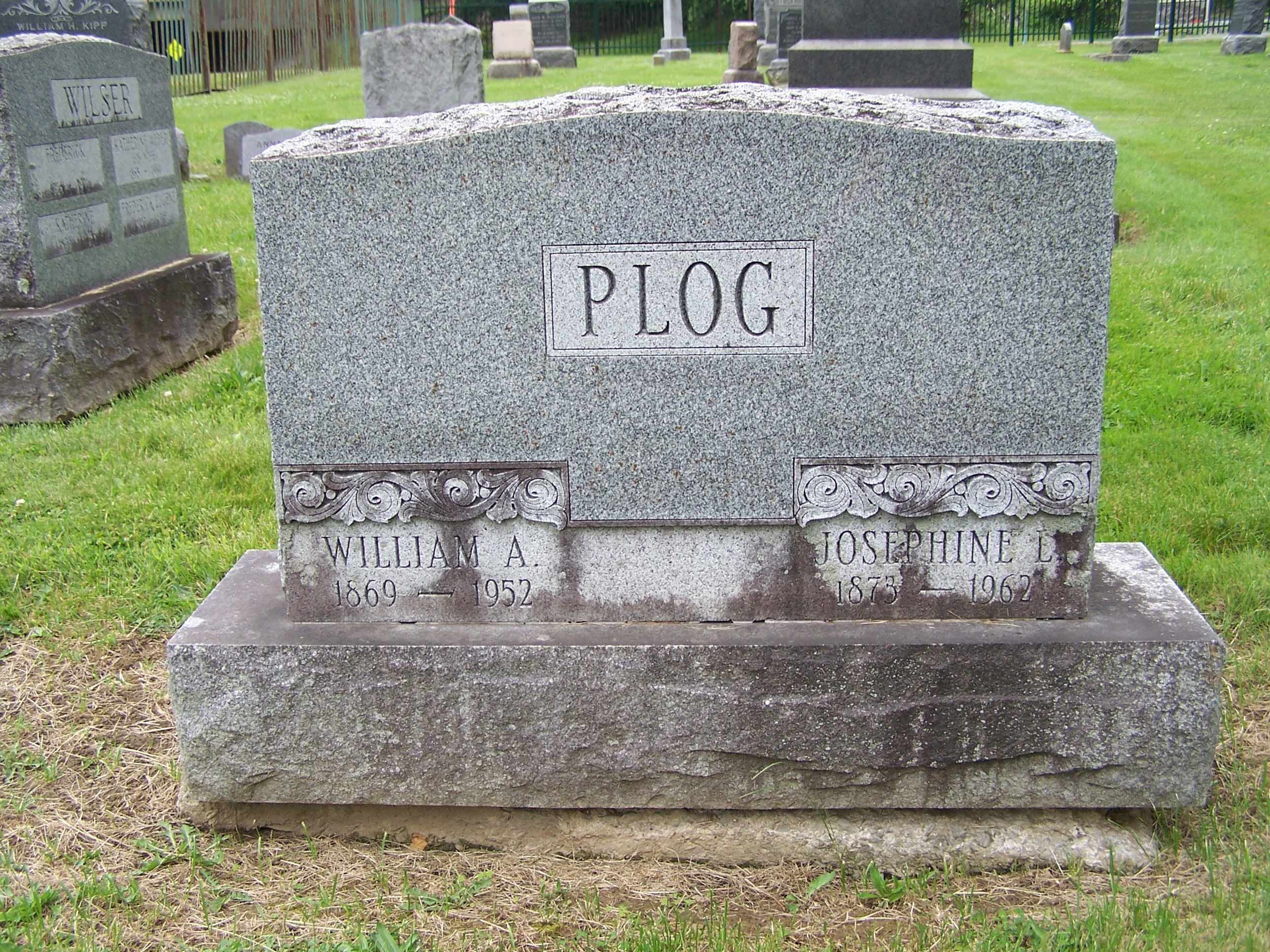William A. Plog was working on an estate in Poughkeepsie New York, just south of Hyde Park, at the time the position at Springwood came available. Mr. Plog was looking for a new job because he was worried that the current estate that he was working at might give out. So, Mr. and Mrs. Plog came to the Roosevelt Estate to be interviewed by James and Sara Roosevelt. By Mr. Plog’s recollections, Mrs. Roosevelt (Sara) was quite pleased with both himself and his wife after the interview. The Roosevelt’s decided to give both a trial run and on November 3, 1897, Mr. Plog was officially hired. His wife joined him a bit later. Mr. Plog said the new job came along at a good time. He had been married for 3 years at the time and needed a new home. They liked Sara and thought it would be a nice place to work. Upon arriving at the Roosevelt Estate, the Plogs found the home they were to live in all fixed up by the Roosevelts and ready for them to move into. Mr. Plog worked for the Roosevelt family right up until the death of Franklin Roosevelt in April 1945. He would continue to work on the estate for a time after the estate was taken over by the Federal government.
Mr. Plog only worked for James Roosevelt for 3 years, because James died in December of 1900, but he did enjoy working for him. William Plog described James as a very nice man who was still in good health in 1897. He was moderately built at 5ft 10in with some stout to him. He was an extremely active person and went out and checked on the farm every day. According to Mr. Plog’s account James Roosevelt’s favorite recreational activity was to drive the carriage or ride his saddle horse every day. Mr. Plog said James Roosevelt was a good employer and a stern man in the way he ran the estate. When James Roosevelt did check on the estate, he always wore a suit, but if he was driving or riding James Roosevelt wore a riding suit, short pants with leggings. Mr. Plog’s opinion of Mrs. Roosevelt was just as kind as it was toward her husband. He described Sara as “a beautiful woman with a lovely complexion. She was about 6 feet tall with dark hair. Sara had fine manners and was a good person to work for.”
When Mr. Plog arrived for work on November 3, 1897, he was to be paid 45 dollars per month. He was also given a home on the North side of the property. It was a two-story Gothic revival home built roughly in the 1840’s. He had access to all the wood he needed, four tons of coal per year and two quarts of milk per week. The Plog’s had the use of a two-seater wagon anytime they wanted, despite the fact the wagon belonged to Mrs. Sara Roosevelt. If either of them got sick or needed an operation Mrs. Roosevelt helped with the expenses. By 1945 Mr. Plog was making 125 dollars per month.
Mr. Plog supervised 3 men from 1897-1925. The farm on the other side of Post Road was managed by the superintendent. There were three superintendents’ during that time period: Mr. Irving. Mr. Edgar and Mr. Logan. Mr. Plog became the superintendent of the estate in 1925 and managed both sides of the Post Road until FDR’s death. James Roosevelt and later Sara Roosevelt had a coachman and a groomsman who took care of four horses and a pony under the supervision of the superintendent. These men usually boarded together, and these workers changed all the time. Mr. Plog managed three men in 1897 and they made 30 dollars per month and received all the wood they needed, three tons of coal per year and one quart of milk per week. They also lived on the property. From 1897-1925 the daily duties of the three men supervised by Mr. Plog entailed the maintaining of the flower gardens, stables, garage, the green house, ice houses, and the sheds. During the winter months they grew ring grapes which wrapped around the inside wall of the greenhouse as well as strawberries. He recalled as the grapes grew, they thinned them out to allow the grapes to grow larger.

Mr. Plog at work in the greenhouse (NPS Photo)
Mr. Plog described the two gardens on the main Roosevelt estate, “Where the current Rose Garden is today, resides the gravesites of Franklin and Eleanor Roosevelt. Prior to that it was a small vegetable garden. It consisted of fruit trees, roses and vegetables all surrounded by the hedges. In 1912 it was redesigned by Mr. Anderson to its current configuration.” Mr. Plog said that the original hedges were flat and were constantly damaged by the winter snows, so he made the hedges pointed to prevent future damage to them during the winter months. In the Rose Garden grew monthly and yearly roses, as well as pansies that Mrs. Sara Roosevelt would pick every day. Just north of the Rose Garden was a mini garden that had 50 plants, plus pear and plum trees. A bee house was also located in the area with about 25 hives. Mrs. Roosevelt kept most of the honey and gave the rest away as gifts. The main vegetable garden, about 50 feet or so north of the mini garden grew carrots, raspberries, asparagus, corn, and potatoes. On the west side of the garden were apple trees and as they died off, Mr. Plog kept expanding the garden. After James Roosevelt died in December 1900, Sara Roosevelt took over the management of the estate. Mr. Plog recalled that Sara Roosevelt laid out the work that needed to be done. She supervised very closely both the estate and the farm across the road. She checked on the cows and farm horses every day. She spent time in the gardens and the greenhouse. He said that she kept up on the advancement of farming to a point but always ran the property as a gentleman’s farm.
For the first three years the Plog’s worked on the estate Sara Roosevelt allowed the couple to winter in the main house (Springwood). They stayed on the third floor in one of the bedrooms. Sara let them utilize the kitchen, dining room downstairs and at times the sitting room now called The Snuggery to use the fireplace. Holidays were a special time at Springwood for the Plogs. Mrs. Plog recalled prior to 1915 that the Thanksgiving dinner menu consisted of turkey, plum pudding, chestnut dressing, and all the fixings. Then, Mrs. Roosevelt would go to New York City for two weeks and return for the Christmas holiday. Presents were always opened in the morning by the family, and from 5-6 pm presents were handed out to the staff.
Mrs. Plog recalled that she saw FDR the morning before he went to Campobello late summer 1921. She gave him his breakfast and he told her he would see her when he returned. The next time she saw FDR was April of 1922. Mrs. Sara Roosevelt asked Mrs. Plog if she would look after her son for two weeks. She accepted. That was quite a responsibility put on Mrs. Plog by Sara Roosevelt. The fact that Sara Roosevelt entrusted Mrs. Plog with that responsibility of caring for her beloved son says something about Mrs. Plog’s character. Her daily routine consisted of bringing him his breakfast at 10 am, lunch at 1 pm, and dinner at 7 pm. He took lunch and dinner in the dining room. He received no visitors per his request and passed the time sitting on the east facing porch relaxing, reading, and sorting his boats. The valet would bring him downstairs by way of the elevator. Mr. Plog installed the ramp on the second floor that allowed Franklin to get to the elevator from the second floor to the landing. FDR would then retire to the bedroom between 10-11 pm. Mrs. Plog said he never complained and was a wonderful patient.
During the summer of 1922, FDR was home for a couple of months. He and his nurse tried walking with his crutches. This was a very difficult for Franklin, and as a result, he did not try it very often. He tried to ride horseback which did not go well. He did ride in his car driven by the chauffeur. Writing and reading always brought him joy and relaxation. The family did not go to Campobello that summer of 1922.
The earliest memory William Plog had of Franklin Roosevelt was when FDR was 16 years old. FDR was going to the Groton school at that time. FDR loved driving and riding with his mother. His interest at that time were sleigh riding on the big hill behind the home with his friends the Rogers, the Newbold’s, and FDR’s Half-brother’s children. Mr. Plog remembers before James Roosevelt died; he took his son on the ice boat the “hawk” out on the Hudson River. FDR was interested in the running of the estate but deferred to his mother at that time and never told Mr. Plog what to do unless it came from his mother. He recalled that Franklin had a carpentry shop in the attic as well. He heard on the radio at 6pm that FDR died. The date was April 12, 1945. At 8 pm Miss Thompson, Eleanor Roosevelt’s secretary, called about the arrangements. Next morning Mr. Plog heard from Mr. Hackett about FDR’s death arrangements. Mr. Plog and Mr. McDonald from the church help get the grave ready.
 The Roosevelt Gravesite, which Plog helped prepare in 1945 (NPS Photo)
The Roosevelt Gravesite, which Plog helped prepare in 1945 (NPS Photo)Mr. Plog died at his home in April 1952 just shy of his 84th birthday after a short illness. The estate was in preparations for the visit of Queen Juliana of the Netherlands, when Mr. Plog became ill. He remained in series condition from that time until his death. Eleanor Roosevelt went to the funeral. Mrs. Roosevelt wrote in her daily column on April 18, 1952:
“instead of going to the Human Rights Commission meeting on Wednesday morning, where the work up to now has been moving slowly, I took the train to Hyde Park to attend the funeral of Mr. William Plog, who had worked for my Mother-in Law and then for my husband as superintendent of the Hyde Park Place. Mr. Plog stayed on when we turned the place over to the government and continued to do the flowers in the house, just as he had always done them for my Mother-in-Law, and to superintend the gardens, particularly the rose gardens which he had always loved.It is rare that someone works in one job for nearly 55 years. Mr. Plog was 30 years old when he came and 84 when he died. He was a faithful and loyal employee. He had seen my husband grow up from a young boy and he was always fond of him. I was glad that I could be at the funeral and that my cousin, Mrs. Theodore Douglas Robinson, was at home and able also to go to the funeral.Fifty-five years is a long time to be associated with anybody as closely as one is with those who live on the same place. Mr. Plog will be missed very much because he was active almost to the end. At age 84 it probably is fortunate, though when one has to die, to so without suffering or too long an illness. The men who worked with him were devoted to him, for he was a good and kind person. It will seem very strange to me to go over to the old place and not see his familiar face and hear his warm and friendly greeting.”
 Mr. Plog's obituary (Poughkeepsie Journal)
Mr. Plog's obituary (Poughkeepsie Journal)  The Plog's grave in the Poughkeepsie Rural Cemetery (NPS Photo)
The Plog's grave in the Poughkeepsie Rural Cemetery (NPS Photo)
